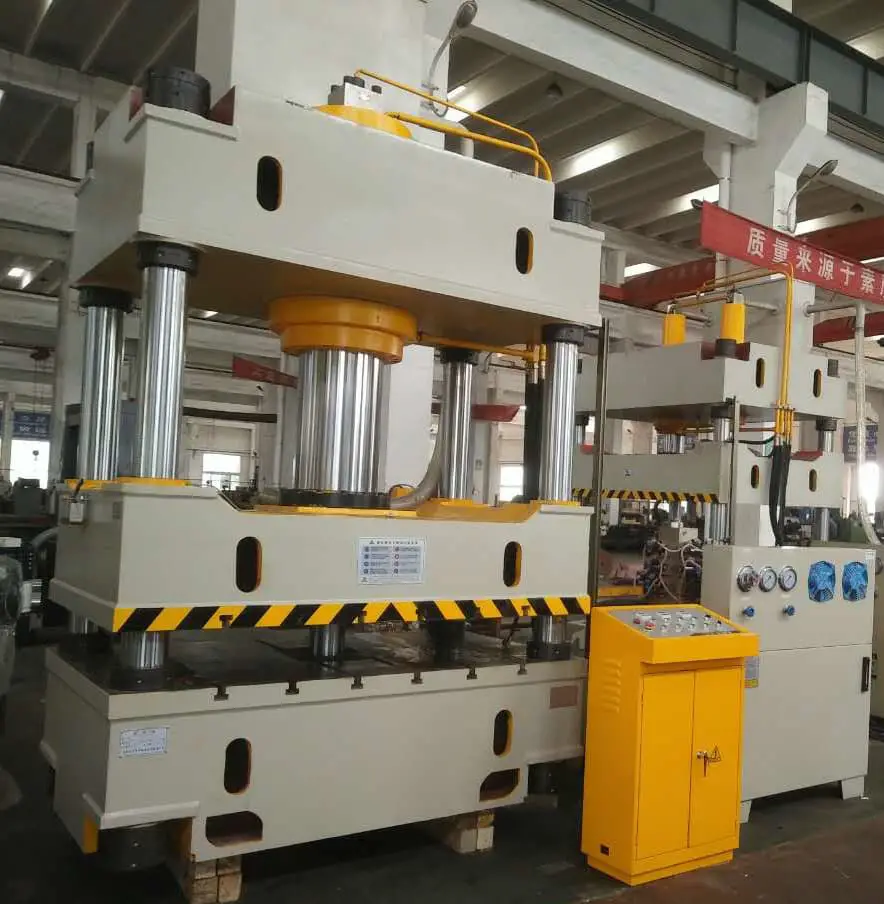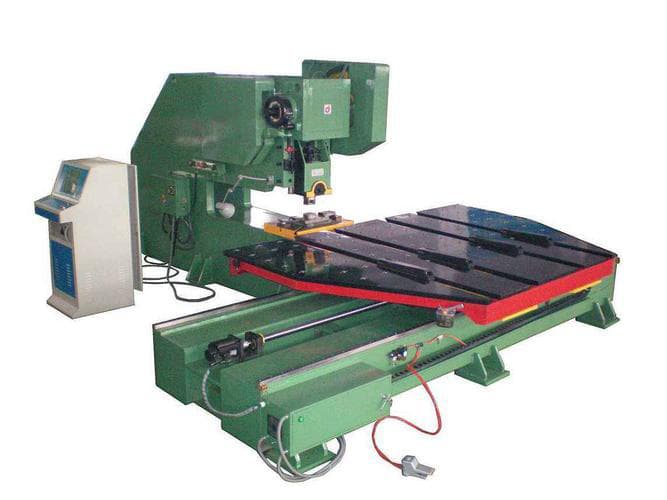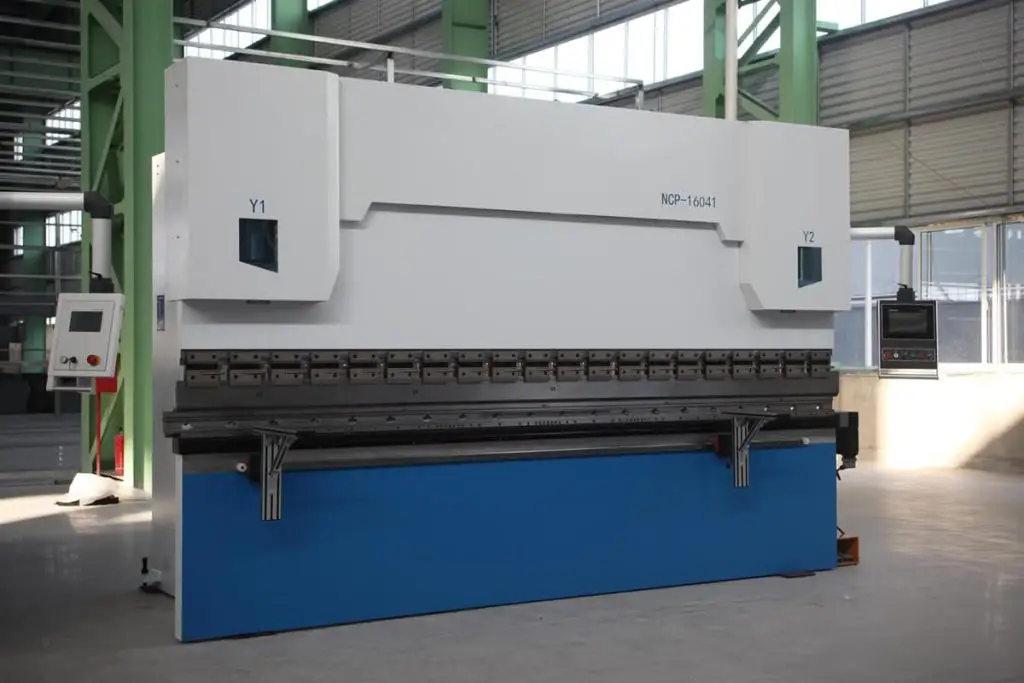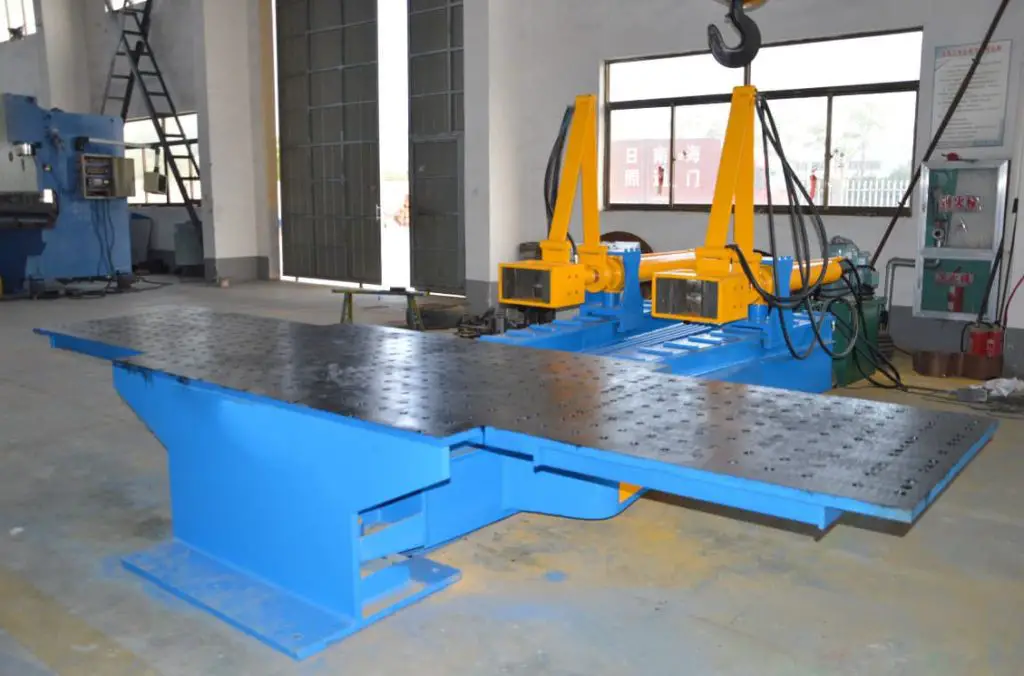
Sheet metal stamping equipment mainly includes: mechanical presses, hydraulic presses, CNC step presses, CNC turret punch presses, sheet metal bending machines, plate rolling machines, bending machines, cold bending forming machines, and hammer forming machines, among others.
1. Mechanical Presses

Mechanical presses are primarily used for separation and forming processes and are most widely used in stamping production. The crank press is a primary form of the mechanical press.
Crank presses can be categorized into crankshaft-type, eccentric shaft-type, and eccentric gear-type based on the form of the crank.
1) The eccentric shaft-type press, also known as an eccentric press, uses an eccentric shaft as its main shaft. By adjusting the eccentric sleeve, the stroke of the press slider can be varied within a certain range. This type of press is suitable for punching and shallow drawing of small and medium-sized parts and has a high production rate.
2) The crankshaft-type press uses a crankshaft as its main shaft, and the stroke of the slider is not adjustable. In this type of press, the crankshaft is supported on both sides of the body, distributing the load evenly across the body. It has a larger nominal force and slider stroke.
3) The eccentric gear-type press replaces the crankshaft with an eccentric gear, providing better force bearing and rigidity than the crankshaft structure. It is suitable for large and medium-sized presses.
Presses can be categorized into open and closed types based on the structure of the body.
1) The open press has a C-shaped body structure, with generally smaller tonnage (25~4000kN) and a smaller table size. It can be approached from three sides, is convenient to use, but has weak structural rigidity, resulting in angular deformation during operation.
2) The closed press has a frame-like body structure, offering good structural rigidity, a larger table size, and a typical tonnage of 1600~25000kN.
Presses can be categorized into single-point, double-point, and four-point types based on the number of force application points on the slider’s crank. Double-point presses have a wide table, and four-point presses have a large table both in width and depth, providing strong resistance to offset loads.
Presses can be categorized into single-action and double-action types based on how they act on the stamped material. Double-action presses are better suited for deep drawing.
The main technical parameters of mechanical presses include nominal force, slider stroke, number of slider strokes, maximum closed height, size of the slider bottom surface, and size of the worktable pad.
2. Hydraulic Presses

Hydraulic presses are mainly used for forming processes, such as deep drawing, embossing, bending, flanging, and straightening.
Hydraulic presses can be categorized into single-column, four-column, and frame-type based on their structural features.
1) The single-column hydraulic press has a C-shaped body structure, generally smaller tonnage, and a smaller table size. It can be approached from three sides, is convenient to use, but has weak structural rigidity, resulting in angular deformation during operation.
2) The four-column hydraulic press is a common structure, meeting regular usage requirements at a lower cost. However, due to its pillar-and-nut combination structure, its resistance to offset loads, precision, and precision maintenance are relatively weak.
3) The frame-type hydraulic press has three forms: integral frame, prestressed combined frame, and plate combined frame. It offers high precision and strong resistance to offset loads. The integral frame structure has a generally smaller table size, while the combined frame structure can have a larger table size.
The tonnage range of four-column and frame hydraulic presses is broad, ranging from a few tens of tons to several thousand tons, and even up to tens of thousands of tons.
Hydraulic presses come in various configurations, such as single-cylinder, double-cylinder, multi-cylinder, vertical, horizontal, upstroke, and downstroke, offering flexibility to meet different process needs.
Compared to presses, hydraulic presses have the following characteristics:
1) Because they use hydraulic transmission, hydraulic presses can achieve higher tonnage specifications and a wider range of working curve modes. The pressure, speed, and stroke of a hydraulic press can be adjusted at will, giving it a broader process adaptability compared to mechanical presses.
2) Due to its hydraulic transmission, there are certain deficiencies in fluid sealing, transmission rigidity, transition of hydraulic energy, stability, and durability of the working process. Compared with mechanical presses, there is a certain gap in the number of slider strokes and reliability.
3) Generally speaking, hydraulic presses are more suitable for forming, especially deep drawing and thick plate forming, while mechanical presses are more suitable for separation and shallow forming, as well as scenarios requiring high production rates.
3. CNC Turret Punch Press

The CNC turret punch press is a type of press that utilizes numerical control technology to perform step punching on sheet metal. The sheet to be punched is secured on the worktable and moved and positioned according to a predetermined program. The punching die is installed in the press die seat and operates in a single or step punching mode, making it suitable for multi-variety, small-batch production.
Key features of the CNC turret punch press include:
① the use of high-precision ball screws and rolling guides, offering high motion accuracy and reliability;
② the incorporation of a numerical control system that automatically completes the punching work;
③ positioning accuracy generally within ±0.15mm, reaching as high as ±(0.05~0.07)mm;
④ compared to regular punching, it can increase productivity by 4 to 10 times;
⑤ short production preparation cycle, reduced labor intensity for workers, and saves on production floor space.
4. CNC Turret Punch

The CNC turret punch is an efficient and precise sheet metal punching equipment. Between the slider and the worktable of the turret punch, there’s a turret that can store multiple sets of dies. The sheet to be processed is held by a clamp and moves in the X and Y-axis direction between the upper and lower turrets according to input instructions.
The punching action, die selection, and sheet movement are all controlled by the numerical control device. It can complete tasks such as punching, pressing, flanging, and louver punching. With its small nominal force, high efficiency, precision, flexibility, safety, and reliability, it’s suitable for multi-variety, small-batch, and complex part production.
The main difference between the turret punch and the step punch press lies in the way the dies are stored. While the slider and worktable of the step punch press can only accommodate one (or a few) set of dies in the vertical direction, the turret of the turret punch can hold dozens of sets of dies and enables quick automatic replacement.
5. Sheet Metal Bending Machine

The sheet metal bending machine, employing simple universal molds, is capable of bending sheet metal at various angles in a linear fashion. It is the most widely used bending equipment due to its simplicity, low mold cost, and ease of replacement. The machine itself performs a simple up-and-down reciprocating linear motion. Common types of bending machines include mechanical, hydraulic, and CNC hydraulic.
(1) Mechanical Sheet Metal Bending Machine
The mechanical sheet metal bending machine shares a similar structure and working principle with the mechanical press machine, converting the rotational motion of the electric motor into reciprocating motion of the slider via a crank-linkage mechanism.
The advantages of a mechanical bending machine include high parallel precision between the slider and the worktable and the ability to withstand eccentric loads. However, with the development of hydraulic bending machines, these advantages have become less pronounced.
The drawbacks of a mechanical bending machine are: (1) stroke and speed cannot be adjusted; (2) the slider does not reach nominal force in most of the stroke; (3) careful adjustment of the machine’s closed height is required before operation; (4) it is difficult to achieve CNC and automated operation.
Due to the non-adjustable speed of the mechanical bending machine’s slider, high bending speeds can pose a danger to the operator and cause personal accidents.
When bending large thin plates, the sheet metal may undergo bending springback, affecting the shape and precision of the part. With the rapid development of hydraulic technology and hydraulic bending machines, hydraulic bending machines have become the mainstream in sheet metal bending equipment, and mechanical bending machines have been phased out.
(2) Hydraulic Sheet Metal Bending Machine
The hydraulic sheet metal bending machine operates through direct hydraulic drive. The hydraulic system can apply full pressure to the sheet metal throughout the entire stroke, automatically protecting against overload and easily achieving automatic control.
Compared to mechanical bending machines, hydraulic bending machines have significant advantages:
(1) they feature overload protection, preventing damage to molds and machinery; (2) CNC operation is easily achievable, with simple and convenient adjustments of stroke, pressure, and speed; (3) maximum pressure can be generated at any point in the stroke; (4) fast approach and slow bending can be realized, with the stroke conversion point adjustable at will.
(3) CNC Sheet Metal Bending Machine
Since the mid-1980s, bending machines have rapidly evolved towards CNC operation.
With the adoption of CNC, sheet metal bending machines can save 20%-70% on adjustment time, 20%-50% on operation time, and 30%-45% on inspection time, reducing labor force by 20%-30% and improving bending quality while reducing scrap rates.
CNC bending machines have the following advantages:
(1) they can achieve bending deflection compensation and CNC bending programming, offering high bending accuracy and consistent precision across batches of parts; (2) multiple bending operations can be completed on one machine, reducing semi-finished production; (3) bending data is easy to correct and store, shortening production preparation time. The operation is simple and reduces the skill requirements for operators.
6. Plate Rolling Machine

A plate rolling machine is a universal tool used to bend metal sheets into cylindrical, arc-shaped, or other shaped workpieces. It can be classified into three-roll and four-roll plate rolling machines. The three-roll machine can pre-bend the sheet, and based on different pre-bending adjustment methods, it is divided into universal upper roll adjustment and horizontal lower roll movement.
The four-roll plate rolling machine can pre-bend the sheet and perform full numerical control automatic operations, offering higher efficiency and precision than the three-roll machine. Plate rolling machines are widely used in the production of stamped parts for rail vehicles.
7. Stretch Forming Machine

Bending forming involves bending extruded profiles or bent sheets of a certain shape on specialized equipment and molds while applying axial tension and bending moments to the blanks. Various types of bent forming pieces are used in rail passenger cars. The bending forming equipment for rail passenger cars is a jib-style bending machine, divided into horizontal and vertical types, both of which are hydraulically driven.
The vertical bending machine is an older model, with a conventional switch type hydraulic drive. The horizontal numerical control bending machine adopts modern electro-hydraulic proportional control technology, and the bending process can realize mechanical mode and displacement mode control.
8. Cold Bending Forming Machine

Roller cold bending forming is a plastic forming method that uses metal coil as raw material, gradually bends the blank through multiple sets of roll stands, and obtains long strip parts with a certain cross-sectional shape. The advantages of roller cold bending forming are lightweight components, high production efficiency, and material and energy savings.
It can continuously produce using coil materials, especially suitable for the manufacture of long and large parts. The profiles widely used in rail vehicles are mainly produced by roller cold bending forming. The cold bending forming equipment usually consists of a production line composed of an uncoiler, a leveling machine, a forming machine group, a correction device, a cutting device, and an output table.
9. Hammer Forming Machine
Hammer forming utilizes the special mold and high-frequency hammering of a hammer machine. Through manual operation, it can squeeze, stretch, arch, flatten, reshape the sheet or profile, or flatten and straighten it, gradually achieving the desired part shape.
Hammer forming does not produce cutting and heat, the forming is stable, no special mold is needed, the manufacturing cost is low, and the use is convenient and flexible. It is especially suitable for multi-variety, small-batch, and manual stamping production, and is used in the manufacture of stamped parts for rail passenger cars.


